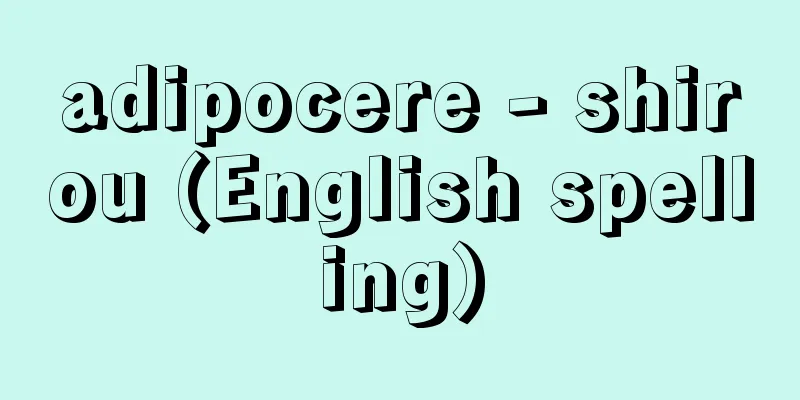Once - Once

|
A monk from the Kamakura period. Founder of the Jishu sect. Posthumous title: Ensho Daishi. Born to the powerful Kono clan of Iyo (Ehime Prefecture), he was the son of Kono Shichiro Michihiro (?-1263). Currently, a monument commemorating the birth of Ippen Shonin stands in front of the gates of Hogon-ji Temple in Dogo Yuzuki-cho, Matsuyama City. His childhood name was Shojumaru, and later he was called Michihisa. He lost his mother at the age of 10 and became a monk, taking the name Zuien. At the age of 14, he became a disciple of Shotatsu (date of birth and death unknown), a monk of the Seizan school of the Jodo sect of Buddhism in Dazaifu. Through the introduction of the priest, he studied the teachings of the Jodo sect under Kedai of Kiyomizu, Hizen (Saga Prefecture), and at Kedai's suggestion, he changed his name to Chishin. At the age of 25, his father died and he returned to Iyo. There he married a woman and lived a secular life while serving Buddhism, but after he became embroiled in an incident involving a landholding relationship between him and a relative, he decided to break away from the cycle of reincarnation and become a monk again. In the spring of his 33rd year, he visited Zenkoji Temple in Shinano (Nagano Prefecture) and copied a drawing of the Nigabyakudo (White Path of Two Rivers). The painting depicts a single narrow white road between two rivers, fire and water, which are metaphors for earthly desires, and represents the path to the Pure Land that nembutsu practitioners must walk. Chishin brought the road back to his hometown, hung it in his hermitage at Kubodera Temple as the principal image, and began practicing nembutsu exclusively. He recorded the faith he gained there in the eleven-fold verses. The eleven-fold verses mean that since ten kalpas ago, when Bodhisattva Dharmakara attained enlightenment and became Amida Buddha, the salvation of all living beings was promised, and therefore all living beings can attain rebirth in the Pure Land with just one nembutsu recitation. In February, when he was 36 years old, he left Iyo Province with three companions, and in the summer, he stayed in seclusion at Kumano Hongu Shojoden, where he received a divine revelation from Kumano Gongen, whose origin is Amida Buddha. Through the revelation, Chishin gained confidence in the practice of Nembutsu advocacy without being concerned with the distinction between faith and disbelief, or purity and impurity of sentient beings, and after receiving a revelation in Shingu that began with the "Six-character Myogo Ippen-ho" (The verse for 600,000 people), he changed his name to Ippen and continued his travels distributing Nembutsu arithmetic (paper charms for advocating the revelation of the Buddha) that read "Namu Amida Butsu, 600,000 people will definitely go to paradise." Ippen did not have a temple where he resided, and traveled around the country accompanied by a small number of disciples, so he was also called Yugyo Shonin (1st) or Sute Hijiri. Wherever he went, he encouraged the people to chant the Nembutsu, and in some places this escalated to the point of dancing Nembutsu. On August 23, 2nd year of Shoo (Shoo 2), while traveling, he died at the age of 51 at the Kannon-do Hall in Wadamisaki, Hyogo. Ippen's grave is currently located at Shinkoji Temple in Hyogo Ward, Kobe City. It is said that Ippen burned all of his books and other possessions at the time of his death, so no written works remain. His successors have compiled biographies such as "Ippen Hijirie" and "Ippen Shonin Eden," as well as two or three "Hokgoshu." The distinctive feature of Ippen's teaching is that he sees all living beings (their capacity and ability) and Amida Buddha (their law and object of reference) as one (the unity of the capacity and object of reference). He teaches that this unity of the capacity and object of reference is realized in chanting the name Namu Amida Butsu. Furthermore, unlike Honen (Genku) and Shinran, who preached non-worship of deities, Ippen affirms the worship of deities. Other points that have been pointed out include his inheritance of Seizan's teachings, his influence from Esoteric Shingon Buddhism, and his affinity with Zen. [Kyoshi Hirogami May 19, 2017] "Japanese Thought Series 10: Honen and Ippen, edited by Ohashi Toshio (1971, Iwanami Shoten)" ▽ "Ippen, by Ohashi Toshio (1983, Yoshikawa Kobunkan)" ▽ "Ippen and the Jishu Sect, by Kanai Kiyomitsu (1975, Kadokawa Shoten)" ▽ "A Study of the History of the Establishment of the Jishu Sect, by Imai Masaharu (1981, Yoshikawa Kobunkan)" ▽ "A Study of Ippen's Teachings and the History of the Jishu Sect, by Kono Noriyoshi (1981, Toyo Bunka Publishing)" [References] | | | |Ippen leaves Iyo Province with three companions. Volume 2 (copy held at the National Diet Library ) "Illustrated Biography of Ippen Shonin" Source: Shogakukan Encyclopedia Nipponica About Encyclopedia Nipponica Information | Legend |
|
鎌倉時代の僧。時宗(じしゅう)の開祖。諡(し)号は円照(えんしょう)大師。伊予(愛媛県)の豪族河野(こうの)氏の出身で、河野七郎通広(みちひろ)(?―1263)の子。現在、松山市道後湯月町の宝厳(ほうごん)寺門前に「一遍上人(しょうにん)御誕生旧蹟(きゅうせき)」の碑が立っている。幼名を松寿丸、のち通尚(みちひさ)と称した。10歳のとき母を亡くし、出家して随縁と名のった。14歳で大宰府(だざいふ)の浄土宗の西山流(せいざんりゅう)の僧聖達(しょうたつ)(生没年不詳)の門をたたく。聖達の紹介により、肥前(ひぜん)(佐賀県)清水(きよみず)の華台(けだい)に師事して浄土宗の教学を学び、華台の勧めにより名を智真(ちしん)と改めた。25歳で父の死にあい伊予に帰国。ここで妻をめとり在俗の生活を送りつつ仏に仕えていたが、親類縁者との間に生じた所領関係に絡む事件に巻き込まれたことがきっかけで、輪廻(りんね)の業(ごう)を断とうとして再出家を決意し、33歳の春信濃(しなの)(長野県)の善光寺に参詣(さんけい)し、二河白道(にがびゃくどう)の図を写す。図は煩悩(ぼんのう)のたとえである火と水の二河に挟まれたただ一筋の狭く細い白道が、念仏行者の歩むべき極楽浄土(ごくらくじょうど)へ至る道を表しており、それを故郷に持ち帰った智真は、窪寺(くぼでら)の庵室(あんしつ)に掲げて本尊とし、専修(せんじゅ)念仏の行(ぎょう)に入り、そこで得た信心の内容を十一不二偈(げ)に記した。十一不二とは、十劫(じっこう)の昔、法蔵菩薩(ほうぞうぼさつ)が正覚(しょうがく)を得て阿弥陀仏(あみだぶつ)となったとき、衆生(しゅじょう)の救済は約束されたのであるから、衆生は、ただ1回の念仏で往生できるという意である。 36歳の2月、同行3人を伴って伊予国を出立、夏のころ熊野本宮証誠殿(くまのほんぐうしょうじょうでん)に参籠(さんろう)し、阿弥陀仏を本地とする熊野権現(ごんげん)の神託を受けた。神託によって智真は衆生の信不信、浄不浄の区別にこだわることのない念仏勧化(かんげ)の実践に確信を得、やがて新宮で「六字名号(みょうごう)一遍法」で始まる六十万人偈(げ)を感得して名を一遍と改め、「南無阿弥陀仏 決定往生 六十万人」と記した念仏算(ふだ)(念仏勧化の札)を賦(くば)る賦算(ふさん)の旅(遊行(ゆぎょう))を続けた。一遍は止住する寺をもたず、少数の弟子を同伴して全国各地を遊行したので遊行上人(1世)とも捨聖(すてひじり)ともいわれた。行く先々で民衆に念仏を勧め、所によってそれは踊念仏にまで高揚することもあった。正応(しょうおう)2年8月23日、遊行の途次、兵庫和田岬の観音堂において51歳で没した。現在、神戸市兵庫区真光寺に一遍の墓がある。一遍は臨終に所持の書籍などすべてを焼却したというから、著作は残っていない。後人の手により『一遍聖絵(ひじりえ)』『一遍上人絵伝』などの伝記と、二、三の『法語集』が編集された。 一遍の教法の特色は、衆生(機・能帰(のうき))と阿弥陀仏(法・所帰(しょき))とを一体とみる(機法不二(きほうふに)・能所(のうしょ)一体)ところにある。この能所一体は南無阿弥陀仏と唱える名号において実現されると説く。また神祇(じんぎ)に対しても不拝を説く法然(ほうねん)(源空(げんくう))や親鸞(しんらん)とは異なり、一遍は神祇崇拝を肯定する。そのほか、西山教学の継承、真言密教の影響、禅との親近なども指摘されている。 [広神 清 2017年5月19日] 『大橋俊雄校注『日本思想大系 10 法然・一遍』(1971・岩波書店)』▽『大橋俊雄著『一遍』(1983・吉川弘文館)』▽『金井清光著『一遍と時衆教団』(1975・角川書店)』▽『今井雅晴著『時宗成立史の研究』(1981・吉川弘文館)』▽『河野憲善著『一遍教学と時衆史の研究』(1981・東洋文化出版)』 [参照項目] | | | |同行3人を伴って伊予国を出立する一遍。巻2 写国立国会図書館所蔵"> 『一遍上人絵伝』 出典 小学館 日本大百科全書(ニッポニカ)日本大百科全書(ニッポニカ)について 情報 | 凡例 |
<<: Illustrated biography of Ippen Shonin
Recommend
Okuroku District
… [Toshiya Torao] 【middle ages】 The Middle Ages i...
Horse keeping club
〘Noun〙 A kakibe who served the Yamato government a...
Destroyer - destroyer
Originally, a high-speed surface vessel (surface ...
Hatake
Hague is a type of eczema that appears as round, w...
Afro Hair
Afro hair is a hairstyle unique to African-America...
Bartel Leendert van der Waerden
1903‐1996 A mathematician born in the Netherlands....
University Imperiale (English)
...Also the name of the University of Tokyo from ...
Egyptian Economy
…In the November 1995 general election, Muslim Br...
Checkland, PB (English spelling) ChecklandPB
...SSA was born out of the reflections that were ...
Coster
[Born] Around 1370 [Died] 1440? Dutch inventor of ...
Academic Freedom
…After the Renaissance, as academic fields develo...
Chiaki-san - Senjuuji
A branch of the Atsuta Daigūji family of the South...
munera
…The nominated person (in effect a propertied cit...
sleeve
…However, if the axe is too tightly attached, the...
florin banco (English spelling) florinbanco
…Under these circumstances, people would rather r...









